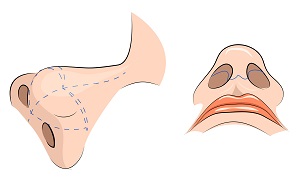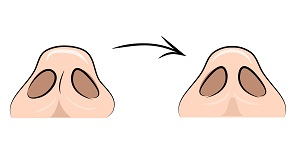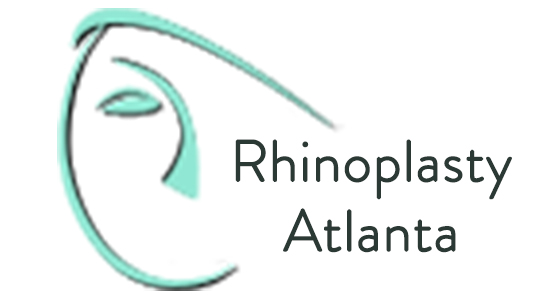Rhinoplasty is the most common cosmetic procedure performed today and can be done any time after physical growth of the nose is completed. href=”https://rhinoplastyatlanta.com/dr-peter-j-abramson/”>Dr. Peter Abramson at Rhinoplasty Atlanta performs Rhinoplasty surgery to modify the nose by changing its size and sculpting the nasal structures so that the nose is in harmony with other facial features. On many occasions Rhinoplasty can be combined with other procedures such as a Mini Facelift, Chin Augmentation, or a Brow Lift to further enhance a patient’s facial symmetry.
When the surgery is done to improve appearance, he re-shapes the nose on an individual basis to achieve a more desirable, natural, non-surgical shape. This is in contrast to the unfortunately common and obvious surgical appearance of the scooped-out, turned-up nose with a pinched tip. Surgery can also improve nasal breathing when the septum is deviated or if a patient suffers from allergies or sinus problems. Regardless of what is needed, removal of a hump, decreasing the length or width, correcting a deviation, or in some cases building up nasal depressions, Dr. Abramson tailors the procedure to meet the individual needs of each patient. To learn more about different types of Rhinoplasty, click on the links below:
- Ethnic Rhinoplasty
- Revision Rhinoplasty
- Teenage Rhinoplasty
- Functional Rhinoplasty
- Augmentation Rhinoplasty
- Post-Tramatic Rhinoplasty
- Reduction Rhinoplasty
Procedure Preparation
Prior to a Rhinoplasty procedure, Dr. Abramson recommends that patients adhere to standard pre-op guidelines to allow for patient safety and maximum post-op results as follows:
- Eat a healthy diet rich in nutrients.
- DO NOT smoke in the weeks surrounding the procedure.
- DO NOT take pain medication containing aspirin or ibuprofen.
- Provide Dr. Abramson with a list of any medications that are taken regularly.
- DO NOT eat or drink after midnight the night before the procedure.
- DO NOT wear makeup or contact lenses to surgery.
- Patients must have a friend or relative drive them to and form the procedure.
About the Procedure
After numbing the area, Dr. Abramson will make incisions to access the bones and cartilage that support the nose. There are two general techniques for making the incisions:
Open Rhinoplasty
For Open Rhinoplasty, the incisions are made outside the nose with a small access incision on the underside of the nose between the nostrils that then connects with other incisions hidden inside the nose. Advocates for the Open Rhinoplasty approach say that it fully opens the nose, providing better visualization of the nasal structures and a more direct route for surgical manipulation; the small scar at the base of the nose is barely visible once it heals.
Endonasal Rhinoplasty
For an Endonasal Rhinoplasty, the incisions are made inside the nasal passages. Because these incisions are hidden, they are invisible after surgery. Advocates for the Endonasal approach say that it permits more limited dissection of nasal tissues, offers excellent visualization of nasal structures, and eliminates the visible scar at the base of the nose.
Once the incision has been made, Dr. Abramson can add or remove bone and cartilage to adjust the supporting structures inside the nose. The size of your nose can be reduced or increased and the nose may be shortened or lengthened.
To view before and after Rhinoplasty surgical pictures click here.
Aftercare and Recovery
A cast is placed on the nose for approximately six days. In the immediate post-operative period, the patient receives medication for swelling and is instructed to place ice on the eyes to keep swelling to a minimum. In most cases there will be some swelling and bruising around the eyes, lasting six to ten days. When the cast is removed, nasal swelling is present, but this generally goes down quickly and is not obvious to others. However, depending upon the amount of work necessary and the thickness of the skin, the final shape of the nose is not achieved for several months. There will be some stuffiness and nasal obstruction for a short time after surgery, accompanied by a temporary decrease in sensation of the nasal skin. Strenuous activities should be avoided for approximately two weeks. The minimal discomfort some Rhinoplasty patients experience after surgery is easily controlled with mild analgesics. To help the recovery process, Dr. Abramson suggests that patients do the following:
- Following the procedure, remain out of bed in an upright position to decrease swelling and accelerate healing.
- No strenuous activities for 2 to 3 weeks.
- Avoid prolonged exposure to direct sunlight.
- Keep scheduled follow-up appointments following surgery.
Rhinoplasty Atlanta uses innovative, state-of-the-art techniques and instruments to perform a variety of Rhinoplasty and aesthetic procedures for patients throughout the Metro Atlanta, GA area including Alpharetta, Roswell, Sandy Springs, Marietta, and Johns Creek. Call 404/297-1789 today to schedule a personal consultation with Dr. Abramson to determine if Rhinoplasty is right for you.
